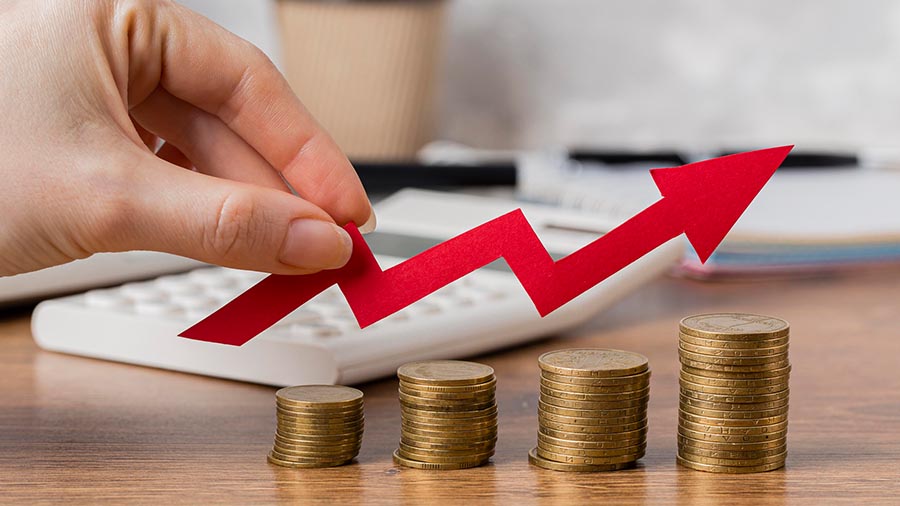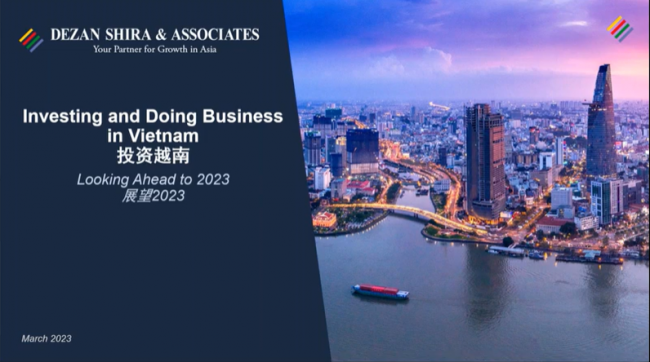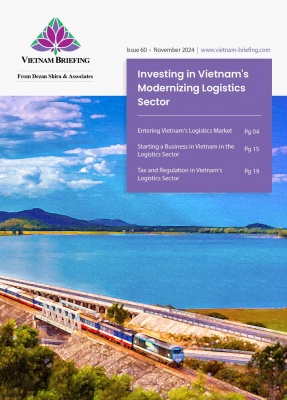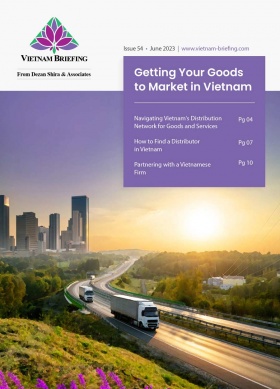Medical Tourism in Vietnam: Opportunities and Challenges for Foreign Stakeholders
Vietnam’s healthcare sector is rapidly growing, presenting significant investment potential for businesses interested in medical tourism. However, it’s important for foreign firms to conduct thorough market research and seek local expertise to successfully navigate and seize opportunities in this emerging industry. In our profile, we explore the Vietnamese healthcare sector, the rising trend of medical tourism, facilitative developments, as well as prevailing market risks and challenges.
An official report provided by the Ho Chi Minh City Department of Tourism (DoT) at a press conference earlier this year stated that there has been a consistent and notable increase in the number of tourists seeking medical services in Vietnam with medical tourism estimated to generate US$2 billion annually.
The DoT estimates that Vietnam currently attracts an average of 300,000 foreign visitors each year for medical examination and treatment, with Ho Chi Minh City the preferred destination for 40 percent of these medical tourists.
As Vietnam’s healthcare infrastructure continues to develop, there will likely be a rise in demand for advanced medical technologies, equipment, and expertise. Foreign medical firms specializing in cutting-edge treatments, specialized medical services, and healthcare equipment could find a receptive market in Vietnam.
Additionally, collaboration with local healthcare providers and institutions could prove beneficial for foreign investors, as it allows for better market penetration and a deeper understanding of the local healthcare landscape.
With this in mind, here is a short overview of the sector and where foreign firms might find the best opportunities.
Medical tourism in Vietnam in numbers
The healthcare industry, both on a global scale and specifically within Vietnam’s pharmaceutical sector, is experiencing rapid growth. This can be attributed to broad efforts to improve accessibility and affordability.
Furthermore, higher disposable incomes and an aging population are driving greater expenditure on healthcare services, particularly in pharmaceuticals, and subsequently greater investment in the sector.
Vietnam’s healthcare market, valued at US$16.2 billion in 2020, accounts for 6 percent of GDP. Expenditure on health is also expected to rise to US$20.3 billion in 2025 and US$33.8 billion in 2030. This is in line with an estimated compound annual growth rate (CAGR) of 7.6 percent between 2020 and 2030, according to Vietnam Report.
A part of this will be driven by medical tourism services.
In this respect, Vietnam is gradually gaining recognition as a preferred destination for medical tourism, particularly in the field of dental care due to its commendable quality and affordability, according to International Living. In particular, dental procedures in Vietnam are substantially more cost-effective compared to the United States, while still maintaining a high standard of care.
Vietnam’s major towns and cities have international dental clinics with English-speaking dentists, attracting foreign patients from the US, Australia, and Europe. These patients benefit from cost savings and cultural experiences, often extending their stay to engage in tourism activities.
The growth of medical tourism
Overall, the number of international arrivals to Vietnam in 2022 amounted to 7 million. This was a substantial increase compared to the year before. However, it is crucial to note that this figure remains notably lower, 79.7 percent lower in fact, to 2019.
A 2022 report from the General Statistics Office estimated that the average expenditure per tourist for healthcare treatments amounted to US$156.58. Conversely, in the year 2020, the average was noticeably higher reaching US$225.61.
Vietnam’s medical tourism advantages
Vietnam is emerging as a highly promising medical tourism destination according to Martin Koerner, the Group Commercial Director of luxury resort operator The Anam.
In a LinkedIn post, he noted that Vietnam boasts four JCI-accredited hospitals, with doctors and nurses accredited by prestigious organizations like JCI and ISO.
He also said that Vietnam offers relatively affordable medical services. This sets Vietnam apart from other medical tourism destinations like Singapore, Thailand, and Malaysia. For example, heart bypass surgery costs US$10,000-US$15,000 in Vietnam whereas in Thailand it costs from US$25,000-US$30,000.
Furthermore, Koerner noted that Vietnam’s allure extends beyond healthcare, offering a rich cultural heritage and history. Tourists can admire natural wonders like Ha Long Bay and enjoy the warm tropical climate. An abundance of natural hot springs further enhances its appeal as a health and wellness destination, he said.
Finally, Vietnamese people, Koerner said, are known for their warm hospitality and amiable nature, contributing to a positive medical tourism experience in Vietnam. Their eagerness to assist tourists and accommodate their needs is evident.
Challenges and risks
Despite Vietnam’s positive aspects in terms of providing medical tourism services, there are several challenges and constraints impeding the industry’s growth, according to Koerner.
As a medical tourism destination, Vietnam is relatively unknown.The quality and accessibility of healthcare services in Vietnam are not well known in key medical tourist source countries. As a result, potential medical tourists often have reservations with respect to safety, hygiene, the language barrier, or the legal aspects involved in seeking medical treatment abroad.
Key stakeholders, including the government, private sector, medical institutions, travel agencies, and hotels, lack a comprehensive approach to medical tourism. Additionally, a lack of clear regulations and quality assurance standards exacerbates customer satisfaction challenges in the medical tourism experience.
Hoang Nguyen,a prominent real estate consultant, concurs writing in The Investor late last year that a key concern is the absence of a comprehensive policy framework governing land planning, investment incentives, certification standards, and other essential procedures.
“The absence of an overall policy orientation has led to spontaneous and scattered development of health care tourism. Many providers have also shown a lack of professionalism and abused this type of service for their own interests,” he said.
Medical tourism growth drivers in HCMC
General health check-ups, disease screening, and specialized techniques, including traditional medicine, are all becoming more popular in Ho Chi Minh City. To capitalize on this trend, travel businesses in HCMC have partnered with medical facilities to design a selection of more than 30 medical tourism products in 2023.
In light of this trend, the Ho Chi Minh City DoT has collaborated with more than 50 establishments, including hospitals, medical facilities, spas, travel agencies, and accommodation providers. Among these institutions are Gia An Hospital, City International Hospital, Heart Institute Ho Chi Minh City, Ho Chi Minh City Institute of Ethnic Medicine and Pharmacy, as well as AB Travel International Company Limited.
These tourism products are designed to provide healthcare services at esteemed and reputable hospitals, along with opportunities to experience high-class amenities, fine dining, shopping, and resort experiences, all complemented by visits to renowned landmarks and destinations in Ho Chi Minh City.
Growing investor confidence in medtech, pharma sectors
Since 2021, startups in the medical technology and pharmaceutical sectors have emerged that have integrated digital innovations into medical examination and treatment. These have garnered substantial investment inflows.
EastBridge Partners and Quadria Capital, for example, invested US$30 million and US$90 million in USM Healthcare and Con Cung, respectively, in early 2022. EastBridge Partners aimed to expand Con Cung’s network and product portfolio, while Quadria Capital aimed to enhance its integrated AI technology application platform, providing personalized healthcare products and services to over 5 million Vietnamese mothers and their children.
Furthermore, Vietnamese healthcare startup Jio Health secured a US$20 million Series B funding round, led by Singapore-based Heritas Capital, with Fuchsia Ventures, Kasikorn Bank Group, and Monk’s Hill Ventures as contributing investors. Meanwhile, POC Pharma experienced significant growth, raising US$10.3 million in a Series A round, primarily led by Alven fund, with Picus Capital, FEBE Ventures, and FJ Labs participating.
These developments showcase the increasing interest and confidence of investors in Vietnam’s medical technology and pharmaceutical sectors.
Legal and regulatory framework
The Law on Medical Examination and Treatment of 2023
This law encompasses a comprehensive framework that delineates the rights and obligations of patients and medical practitioners, with regard to medical examinations and treatments, as well as operating medical establishments.
It integrates traditional and modern medicine, and advocates for medical care without a profit motive. It covers professional techniques, new approaches, clinical trials, and technical errors. The law also provides standards for providing medical care and outlines resource mobilization guidelines for emergencies. It prioritizes patient rights, ethical practices, and safe and effective medical services.
The Law on Tourism
The primary focus of this law is to govern various aspects of the tourism sector, including the management of tourism resources, the development of tourism products, and the facilitation of tourism activities. The law outlines rights and responsibilities for tourists, businesses, and individuals involved in tourism, as well as provisions for other entities and communities. It also regulates the State’s oversight and management of the tourism industry.
Some significant players in Vietnam
In recent years, Vietnam has witnessed significant advancements in its healthcare sector, marked by the establishment of new hospitals in various smaller cities like Nha Trang, Vung Tau, and Phu Quoc.
Moreover, the Vinmec Health Care System, founded in 2012, has significantly contributed to raising Vietnam’s international healthcare standards. With four full-service hospitals and two outpatient clinics, Vinmec International Hospital in Hanoi and FV Hospital in Ho Chi Minh City have both obtained JCI accreditation. They both have English-speaking medical staff and comprehensive services.
Establishments like Family Medical Practice and SOS International also deliver good but relatively expensive outpatient medical care and have branches around Vietnam. Both Family Medical Practice and SOS International boast English-speaking staff.
Conclusion
Vietnam’s medical tourism industry has made significant strides in recent years, offering a promising blend of high-quality healthcare services, cost-effectiveness, and a rich cultural experience for visitors. The country has witnessed notable advancements in its healthcare infrastructure, with internationally accredited hospitals and clinics emerging in key cities. The integration of traditional medicine with modern approaches further enhances the diverse offerings in medical tourism.
Despite these achievements, the sector faces challenges that require attention and strategic planning. The lack of a comprehensive policy orientation and coordination between various sectors calls for cohesive efforts to foster sustainable growth and professionalism in healthcare tourism. Additionally, addressing environmental concerns and ensuring sufficient capital investment in resort tourism are essential steps to elevate the industry’s overall resilience and development.
About Us
Vietnam Briefing is published by Asia Briefing, a subsidiary of Dezan Shira & Associates. We produce material for foreign investors throughout Eurasia, including ASEAN, China, India, Indonesia, Russia & the Silk Road. For editorial matters please contact us here and for a complimentary subscription to our products, please click here.
Dezan Shira & Associates provide business intelligence, due diligence, legal, tax and advisory services throughout the Vietnam and the Asian region. We maintain offices in Hanoi and Ho Chi Minh City, as well as throughout China, South-East Asia, India, and Russia. For assistance with investments into Vietnam please contact us at vietnam@dezshira.com or visit us at www.dezshira.com
- Previous Article Vietnam’s Imports-Exports Top US$55.8 Billion in June
- Next Article Vietnam News in Brief: Weekly Roundup July 28





























